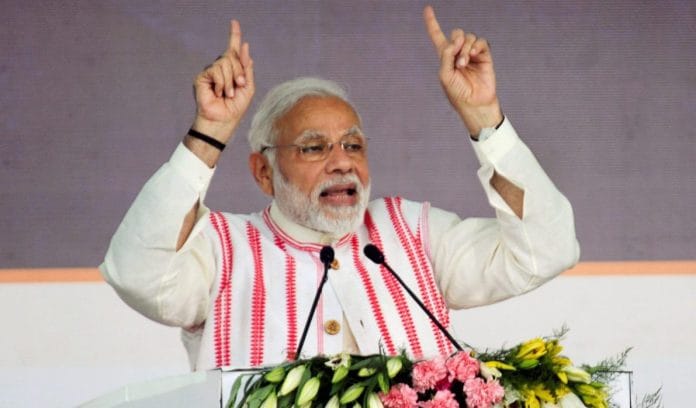The Narendra Modi cabinet met last week, 28 February, and cleared as many as five ordinances and one Constitution amendment order. This was possibly the penultimate union cabinet meeting before the Lok Sabha election dates are announced, and the model code of conduct kicks in.
The question to ask is: Why should a government in its last leg issue so many ordinances before the elections are announced?
While the previous Manmohan Singh-led UPA-2 government had also issued an ordinance in its last cabinet meeting on 3 March 2014, two days before Lok Sabha elections were announced, the Modi government seems to have gone much ahead here.
In its cabinet meeting on 19 February, the Narendra Modi government cleared four ordinances.
The government’s recent ordinances, in the run up to the elections, have once again brought into focus the propensity of successive governments to use this “emergency” provision for their own political ends.
Also read: Modi govt takes the ordinance route to criminalise triple talaq
Given that the Narendra Modi government started its term with two ordinances in its first cabinet meeting – it removed the legal hurdle to the appointment of former TRAI chief Nripendra Misra as principal secretary to the Prime Minister – the last-minute flurry of ordinances may not have come as a surprise to many.
But, did the government actually need to promulgate so many ordinances at this stage?
Under Article 123 of the Constitution, the President has the power to promulgate an ordinance, on the recommendation of the union cabinet, when both houses of Parliament are not in session and if he is “satisfied that circumstances exist which render it necessary for him to take immediate action”.
Simply put, the ordinance is normally issued only to deal with an emergency, which requires immediate legislative action.
Of the five ordinances that the Narendra Modi-led cabinet cleared 28 February, one amended the definition of “person” in Section 2 (v) of the Special Economic Zones Act, 2005 to include a trust, while another extended the period for reconstitution of the Homeopathy Central Council by a year so that the existing Board of Governors can continue.
One wonders why the government had to wait till the proverbial last-minute to finalise these ordinances.
Another ordinance cleared in the cabinet meeting addressed a key point raised in the Supreme Court’s judgment in the Aadhaar matter. The amendment bill was passed in the Lok Sabha but got stuck in the Rajya Sabha and would have lapsed at the end of the 16th Lok Sabha.
Yet, such a move raises serious questions of propriety with the government using ordinance to achieve something it had failed to get done in Parliament.
Also read: The death penalty ordinance is yet another example of ‘lawlipop politics’
The Jammu and Kashmir Reservation (Amendment) Ordinance, 2019, which was also cleared the same day,will amend the Jammu and Kashmir Reservation Act, 2004 to bring persons residing in the areas adjoining the International Border within the ambit of reservation at par with persons living in areas adjoining the Actual Line of Control (LoC). It is a clear case of mixing politics with legislation.
It is however the New Delhi International Arbitration Centre Ordinance, 2019 that takes the government’s brazenness to a totally different level.
This ordinance aims to allow the Centre to assume control and take over the assets of the International Centre For Alternative Dispute Resolution (ICADR), which is an autonomous organisation headed by the Chief Justice of India.
What was the hurry or the emergency that the Modi government couldn’t wait for a few months to get the bill passed in Parliament?
The eagerness of the government to issue and re-issue ordinances in such large numbers flies in the face of the Supreme Court judgments, which say an ordinance can only be issued to deal with an emergency situation.
In 2017, a seven-judge bench of the Supreme Court headed by then-Chief Justice of India T.S. Thakur ruled that “the ordinance making power is not a parallel source of legislation” and that “re-promulgation of ordinances is a fraud on the Constitution”.
Also read: Did full majority Modi govt help Parliament perform better or has politics derailed it?
The bench also held that the ordinances could face scrutiny from courts, especially if it was clear that the power was “exercised to secure an oblique purpose”.
There have been instances in the not-so-distant past when conscientious officers have raised questions on the government’s propensity to issue ordinances in bulk.
However, in recent times, such objections have become rare. The President too has stopped objecting to the wholesale issuance of ordinances under his name and signature.






